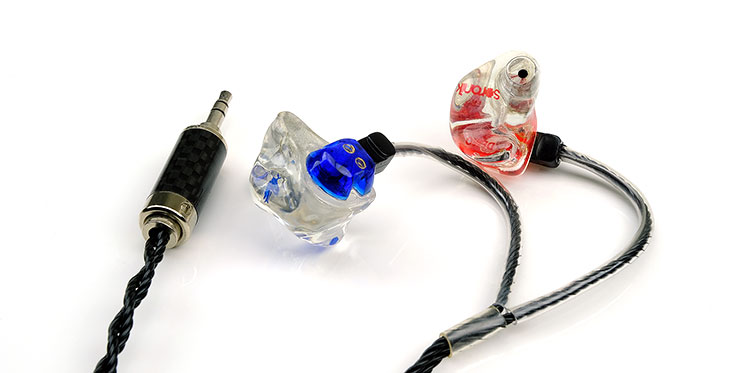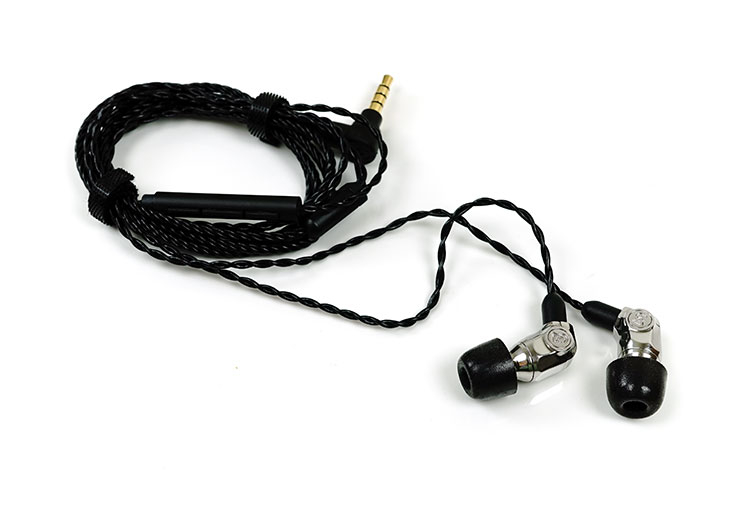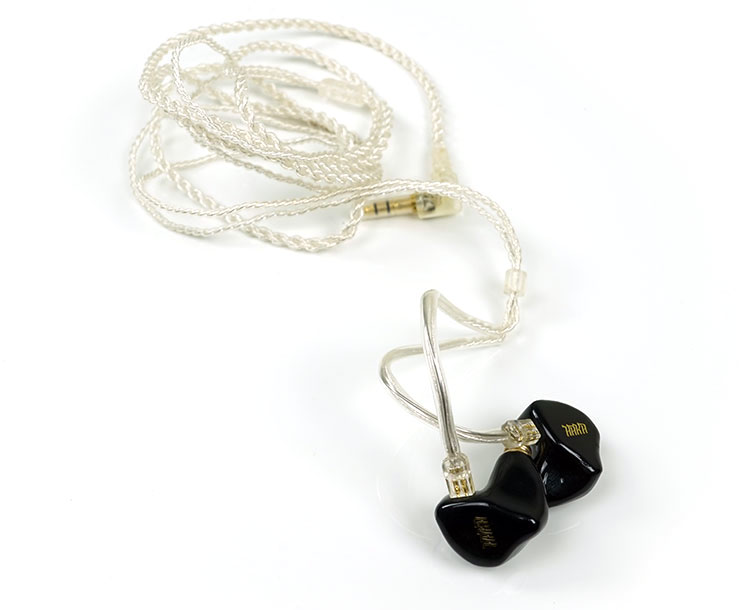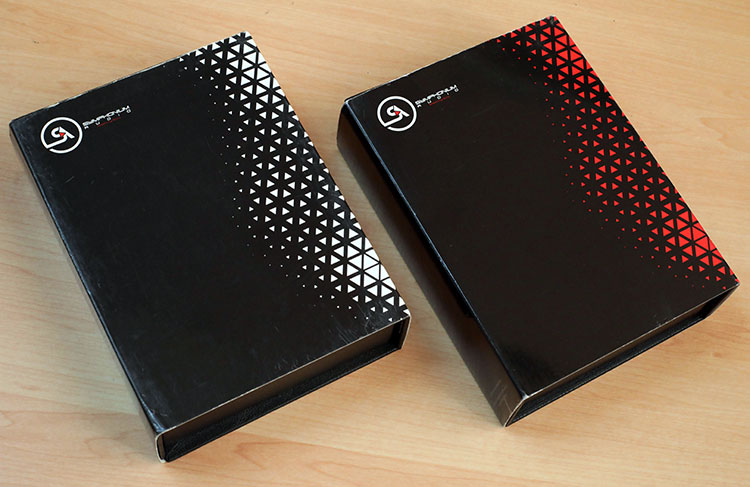Sound Impressions
Tonality
Mirage
Symphonium managed to remain true to their pitch for both IEMs. Mirage indeed has that warm and smooth tonality with a forward midrange presentation and a laidback top-end. Its warmth, however, has given a just a bit of veil in the midrange while there is a lack of sparkle and air in the presentation. Fitting the bill though is that the Mirage is indeed meant for fatigue-free listening sans any harshness from highs.
Aurora
Aurora, meanwhile, has a balanced sound with a slightly elevated yet fairly neutral low-end, an open sounding midrange with a slight upper mids bump as well as top-end that boasts just the ample details, sparkle and air.
The Aurora focuses more on a musical sound that could be a good all-rounder IEM for any genre you throw at it. While there may be a very mild boost in the bass and treble sections, I wouldn’t still consider the Aurora to have a U-shaped signature as its midrange manages to keep up with both ends of the spectrum without sounding recessed.
Staging
Mirage
Overall, the Mirage’s staging offers an intimate presentation and it lacks a 3D feel to it. The stage is still fairly wide but it doesn’t quite extend out of your head. However, there’s a tiny bit of congestion in the mids due to the lack of treble extension which could have added some air in the presentation. Depth is pretty much below average as it falls quite short in portraying accurate spatial cues on instruments especially on live recordings where depth is of the essence. Height, meanwhile, is just average given that lack of air.
Instrument separation is average as instruments manage to have a decently clear spot in the stage. Due to a lack of stage depth, layering is quite lackluster and as aforementioned live recordings that shine with deeper soundstages wouldn’t fair well with the Aurora.
Aurora
The Aurora, on the other hand, has a wider, taller and deeper stage than the Mirage. This is probably one of the best soundstages that I’ve heard in its price range as it creates a decent 3D presentation with no apparent congestion. The width and height almost extend outside of the head while the depth has good reach as well.
Compared to the Mirage, Aurora easily bests the former on all facets as it provides good instrument separation and above average layering that helps in reproducing accurate imaging, especially on live recordings.
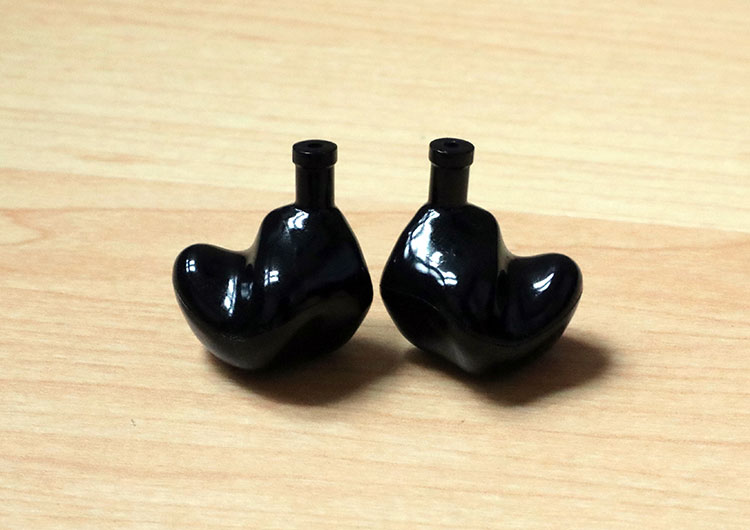
Bass
Mirage
The Mirage’s sub-bass is fairly neutral and it is able to produce ample rumble that is not overpowering. There’s more of a punch than a rumble in its low-end due to that mid-bass bias in its tuning with a marked bump around 200-250 Hz thus, giving an overall warm presentation.
Due to the emphasized warmth in the presentation instruments come off with a euphoric timbre that is easy to listen to for hours. Bass decay, meanwhile remains pacey and complex passages that are focused on the lows are rendered with fairly decent texture and definition.
The track “El Poder” from this up and coming band from the Philippines, Basically Saturday Night, has been my go-to test track of late due to the complexity and speed of the bass riffs. With the Mirage, the bass is rendered smoothly with average texture and clarity. It goes the same with the bass line from Guthrie Govan’s track Wonderful Slippery Thing where slapping techniques in the bass riffs are presented with decent quality.
Aurora
The low-end of the Aurora, on the other hand, is more refined than the Mirage. While there is no apparent sub or midbass bias, its decent extension is enough to produce good bass texture, body and detail without becoming overly flat to the point that’ll give you a boring experience. With an even tuning in its low-end, Aurora’s bass boasts decent impact as well as a fast decay that produces an organic timbre to add some musicality to the overall presentation.
Using the same test tracks for bass, Aurora easily drubs the quality of the Mirage with the former giving a more refined low-end that has a cleaner punch and a more detailed rumble. There was more definition in each note of El Poder’s bass line while the Wonderful Slippery Thing had good body and detail. Adding a pop track in the test, I tested Lorde’s Royals and the Aurora manages to produce an authoritative impact when called for.
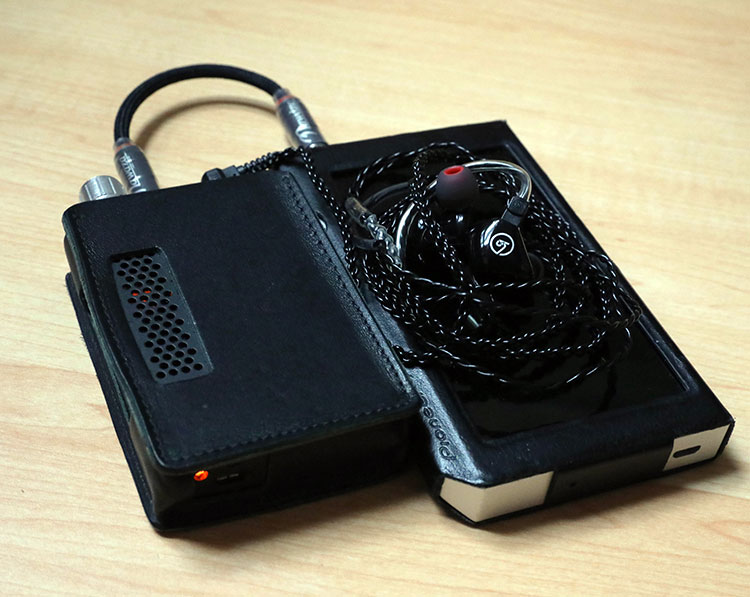
Mids
Mirage
Mirage has an elevated lower midrange at around 500 Hz to 1 kHz. It then rolls off coming into the 4 kHz mark and has that sustained dip until the 6 kHz. This then results in a more smoothened rendition of bass guitar riffs as aforementioned and a more relaxed sound from pianos and other stringed instruments.
There is less energy on percussive attacks as well yet it manages to avoid sounding slow. Vocal presentation is put forward yet I sensed very slight honky sound especially on male vocals due to the 1 kHz boost but the good thing is it isn’t overly done for it to be fatiguing.
Female vocals, meanwhile, are smoothened out and at times it suffers a little lack of clarity for a more emotional portrayal to it as a result of the dip starting at 4 kHz. There’s an artificial timbre to its midrange given that elevation in its lower registers making the sound quite euphoric and smooth.
Test Tracks
The aforementioned qualities are obvious when I took the Mirage for a spin on Toto’s Africa where the lower-pitched vocals would sound quite honky while instruments would have that smooth characteristic.
Drums and percussions, while having enough body, have less attack and energy to them. For some live recordings, I went for the Eagles’ Hotel California from their Hell Freezes Over compilation and this is where you’ll hear how intimate sounding the Mirage is. Vocals were put forward and there some acceptable level of detail to it while instruments were quite cramped yet they sound smooth.
Guitar riffs and percussions had adequate body and weight yet I was still yearning for some extra attack and clarity. I then tested Clair Marlo’s All for the Feeling and ‘Til They Take My Heart Away and in both tracks, her vocals were rendered quite smoothly yet it doesn’t have that bite to it as the uptick at 500 Hz introduces some warmth to it. The warmth is not too exaggerated though thus, making her vocals still very enjoyable. Instruments, meanwhile, had that enveloping warmth to them and they didn’t sound fatiguing in any way.
Aurora
As for Aurora’s midrange, it is relatively neutral with some added body due to a very minute lift in the 250 Hz mark. It then remains flat from there on but would get a polite injection of clarity brought by an uptick starting at 2 kHz before gradually dropping after getting past the 4 kHz mark.
It then produces a natural and open-sounding midrange that allows both instruments and vocals to shine with no apparent harshness or veil in the presentation. Percussive attacks are present while stringed instruments have some weight to them. As for its timbre, the Mirage is able to produce a natural sound due to a fairly balanced tonality in its midrange.
When I ran the same test tracks that I used on the Mirage for the midrange, Aurora manages to tick all the boxes for my preference. Body and weight on instruments were above average along with a good level of attack, clarity, and detail. Vocals, while not lush by all means, still has some smoothness to it while still maintaining good articulation and detail.
Highs
Mirage
Following suit to the Mirage’s smooth midrange is its relaxed treble presentation. There’s a sharp dip starting at 4 kHz and is sustained before getting a very slight boost somewhere between 10-12 kHz and dipping down to the rest of the spectrum.
This tuning, in turn, provides a smooth treble with less sparkle and air as well as a fast decay. Headroom and instrument separation suffers quite a bit as well due to a lack of airiness. While there may be a trade-off in clarity and resolution, the Mirage provides an easy listening experience that is free from sibilance.
Playing Pink Floyd’s Time on the Mirage, the opening bells and chimes were rendered with no harshness while the guitar riffs were smooth. The synth effects, as well as the cymbals, also had the same smooth character.
I wanted some extra definition in the guitar riffs with some added resolution and attack to them yet for my personal taste, the Mirage seems to fall quite a bit short especially when I played Lynyrd Skynyrd’s Free Bird.
Aurora
Aurora, on the other hand, has a well-extended top end with very satisfying transparency, sparkle, air, and resolution. This is due to an uptick from 5-6 kHz as well as a very mild lift across 10-15 kHz before gradually rolling off through the entire frequency spectrum.
Treble has just the right decay for it to sound natural while it also maintains a timbre that is not tizzy, brittle or metallic sounding. While considerably bright compared to the Mirage, Aurora for me just has the right top-end that I could easily enjoy for hours.
The bells and chimes on Pink Floyd’s time have more bite to them from the Mirage yet it still maintains a sibilance-free presentation. Guitar riffs and synths are more resolving while cymbals have a crisp sparkle to them. The guitar solo on Free Bird was also a joy to listen to on the Aurora as each note is rendered with good transparency and detail.
I then added another track to test the highs of the Mirage with Red Hot Chilli Peppers’ Give it Away and right off the bat, the cymbals have an adequate body with no tinge of brittleness at all. The high-pitched funky guitar riffs were also very enjoyable boasting good transparency and resolution.
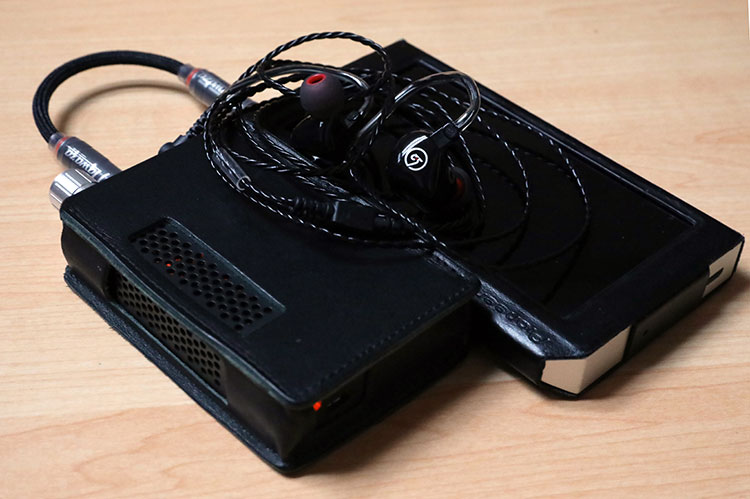
Matchability
Efficiency and Noise
Mirage is rated at 75 ohms and sensitivity at 110 dB whereas the Aurora is at 75 ohms and 109 dB sensitivity. The impedance rating though is quite inaccurate since I don’t have to crank up the volume on any of my sources to get to my preferred listening volumes.
Both IEMs are still efficient even with an unusually high impedance rating for BA drivers as I could drive them both using the Samsung Galaxy S9+ at comfortable listening levels of around 50 to 55 without losing any dynamics.
Both IEMs present zero hiss when using the Pioneer XDP-300R on normal gain. My volume is around 90 and there is no apparent loss of dynamics and details while there are no audible distortions as well.
I also paired it with the Alo Audio Continental V5 (CV5) and surprisingly, both IEMs remain dead silent even with the high noise floor from this amplifier. I guess this is where the high impedance rate on the both IEMs are meant for since again, there is no hiss at all from an otherwise noisy Alo Audio CV5. Volume pot plays around 2 P.M. on low gain and I barely reach 1 P.M. on high gain.
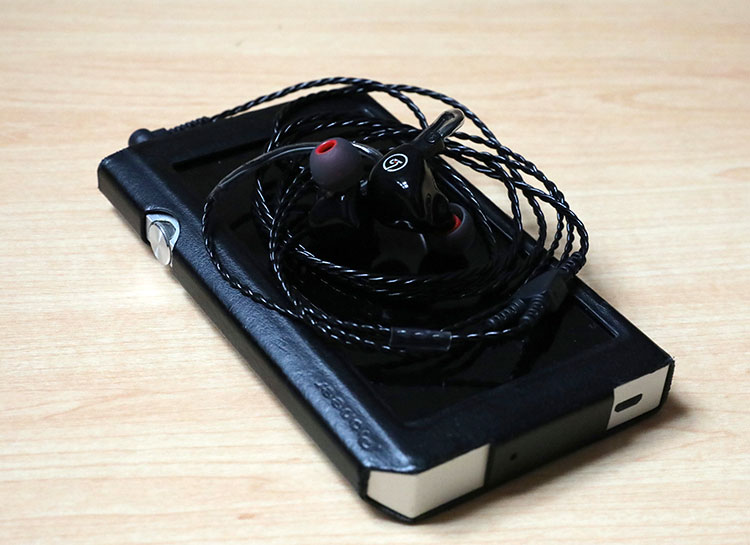
Synergy
Portable Sources
Through the Samsung S9+, the Mirage had an added bass impact and body. However, the midrange presentation rather became too warm and a bit bloated. Personally, this didn’t suit my liking as instruments as well as vocals were quite veiled. The Aurora, however, benefitted well from this pairing as the added sub-bass extension added a more lively character to this balanced IEM.
With the Pioneer XDP-300R, the Mirage had a more mid-bass bias low-end as well as lower midrange focus. The warm and smooth tonality and forwardness in the midrange are maintained while it also has the same laidback treble. As for the Aurora, the balanced sound remained as is with still a bit of emphasis in its low-end impact and top-end sparkle.
Portable Amps
I personally had a lot more fun pairing both IEMs with the Alo Audio CV5 especially when I’ve done some tube-rolling. The Mirage’s otherwise intimate midrange presentation was opened up quite a bit with the CV5 on its stock tube.
However, the midrange was smoothened out quite further giving out an analog sound that is rather too smooth for my taste. But when I changed the stock tubes to the Motorola 6BF7, there is more clarity to the presentation but the added treble is well controlled to avoid any harshness.
Vocals became more articulate as well. Aurora was injected with a bit of more fun too when paired with the Alo Audio CV5 as it had a smoothened yet open-sounding midrange while still retaining that satisfying sparkle. But I enjoyed it best when I used the Raytheon 6832 which opened up the stage a bit more while adding some impact in its low-end and warmth in the overall presentation. Notes, while smoothened out a bit, sounded weightier.
Select Comparisons
Soranik SK1
$450
Technical
The SK1 is a single BA setup just like the Mirage but I find the build and design of the SK1 better than the latter as it sports a filled acrylic shell compared to the Mirage which looks kind of cheap due to a plastic shell as well as a seemingly faulty finish given that seam across the edges.
Comfort and fit, however, is better with the Mirage as it has the right contours that fit well with the shape of my ears. SK1 still has a very small bubble but it could have been more pronounced so it could have a more secure fit on the concha.
Performance
The SK1 is rated at 24 ohms and 102 dB so this IEM needs a bit more power for you to reach comfortable listening levels.
Tonality wise, the SK1 has more of a mid-centric n-shaped signature with a focus on vocals and an instrumental positioning that is pushed back quite a bit. I find the Mirage to have a better instrumental rendition due to its full-bodied mid-bass and lower midrange yet SK1 easily bests Mirage’s vocal presentation as the latter has a more organic vocal presentation.
Additionally, the SK1 has more treble extension compared to the Mirage which has less sparkle and air. SK1, however, does not sound bright in any way as it still remains smooth. It just has better clarity compared to the Mirage.
Preference
I find the SK1 to have better clarity and vocal presentation as well as a superior instrument separation due to that added treble extension. But I like the instrumental presentation of Mirage which is full-bodied and smooth.
At times, the forwardness of SK1’s mids and the added treble to it would be quite fatiguing thus, Mirage is an easy choice for enjoying long listening sessions. Add that more comfortable fit on the Mirage and I could see myself spending more hours on the Mirage. While the SK1 is superior in sound, I’d give the Mirage an edge for its long-term usability.
Campfire Audio Comet
$199
Technical
Comet is also a 1BA setup but it is equipped with the Tuned Acoustic Expansion Chamber system which is touted to cover the entire frequency range as a contrast to the current 1BA offerings that are more focused on mid-centric tunings.
Its design, meanwhile, adopts a bullet-type form factor with a CNC machined stainless steel shell. Compared to the Mirage’s form factor and build, the Comet easily has a more premium look and a more durable design. Comfort and fit, however, is a different story as I still find the Mirage to have superior fit and seal.
Performance
Rated at 48 ohms and 97 dB sensitivity, the Comet is fairly easier to drive than the Mirage yet it doesn’t handle noise very well as there is an audible hiss on the Alo Audio CV5. However, like the Mirage the Comet scaled well with the CV5 especially with the Motorola 6BF7 tube installed and when the music plays, the hiss becomes quite negligible.
As for tuning, the Comet has a u-shaped signature with a little more emphasis on a bit of added warmth in the overall presentation. The Comet provides a more impactful bass presentation if put side by side with the Mirage. Both share a smooth tonality yet the Comet edges the Mirage on sheer musicality as it boasts more clarity over the latter.
Preference
Comet easily has the upper hand in durability due to its sturdy material but Mirage, yet again, has a more secure fit and seal. As for the sound, the Comet is a better all-rounder compared to the Mirage which focuses more on a forward vocal presentation. Mirage, however, as a warmer sound which makes it more suitable for long listening sessions.
QDC Neptune
$198
Technical
Neptune’s design has one of the best aesthetics in its price range as well. I find the Neptune to be more aesthetically pleasing compared to the Aurora which has a minimalistic design. While the Neptune remains lightweight and very comfortable to wear due to its semi-custom design, the Aurora still has the edge as it sports better seal and a non-fatiguing fit.
Performance
The Neptune is rated at 10 ohms and 104 dB and it is probably one of the easiest IEM to drive in this price range. However, it couldn’t stand the high noise floors of the CV5 as its hiss is quite unbearable since it’s audible even when playing music. The Aurora, on the other hand, remains silent on the CV5 and it scales well with the amp too.
The Neptune virtually has a flat presentation with a slightly boosted mid-bass, upper mids as well as some added treble presence. The Aurora, meanwhile, has a balanced sound with a fun and musical presentation compared to the Neptune.
Preference
I find some sort of sentimental value in the Neptune since it was my first crack at mid-fi. I really liked its tonality as well as its fit. But as soon as I took the Aurora for a spin, all of that changed.
I found the Aurora to have a more fun sound compared to the Neptune which bores me at times. Aurora had a better bass extension but the Neptune had the better presentation in its midrange. Instrumental separation and layering where at par with each other yet the Aurora manages to have a better musicality against the Neptune.
As far as comfort and fit are concerned, both have a good quality yet I still find myself leaning towards the better seal of the Aurora.
Jomo Audio Haka
$369
Technical
The Haka belongs to the upper tier of the 1BA offerings in the mid-fi market with a more premium price point. In its universal configuration, the Haka has a semi-custom design with good contours on its acrylic shell as well as a brass nozzle.
It shares almost the same semi-custom design with the Neptune yet I find the Haka to have a more secure fit for long listening sessions. Compared to the Mirage, the Haka is able to hold its own in terms of comfort, fit and isolation.
Performance
Haka is rated at 18 ohms and 107 dB but I don’t find it fairly accurate as I cranked the volume knob a bit more to achieve my suitable listening level. Haka manages to handle high noise floors fairly as I found low levels of hissing on the CV5 which becomes negligible once the music starts playing. Compared to the Aurora, the Haka is rather more efficient though but I like how the Aurora scales well with a decent amp.
The Haka has a u-shaped signature with a warmer approach in its tonality. It then shares a musical sound with the Aurora but I find the latter to have an edge in its midrange presentation as well as treble extension. While Haka may have the more bass rumble and punch, I like how the Aurora is tuned to have a more balanced sound which makes it a better all-rounder.
Preference
Both the Haka and the Aurora have good quality fit but the former has more versatility as tip-rolling is more responsive on the Haka. I like the design of the Haka too with its simplistic all-black look. As for sound, the Aurora surprisingly keeps a tight competition with the more expensive Haka in terms of staging and tonality.
Our Verdict
With a value-oriented performance, I’d say Symphonium Audio nailed it on the Aurora but much less so for the Mirage. While Mirage gets the same build, fit and comfort as the Aurora, I found a few quirks in its tuning particularly with that bit of honky and congested midrange.
If paired with the Alo Audio CV5 with the Motorola 6BF7 those issues with the tonality could be somehow controlled but the cost of getting the CV5 just for the Mirage is unjustifiable. On its own, however, some may like Mirage’s smooth tonality.
Symphonium has done a great job in making the Auroras’ overall presentation very fun to listen due to its tonal balance and surprisingly good technical prowess. This is probably one of the most balanced and well-tuned IEMs that I have heard in this price range due to its good end-to-end extension and organic sound.
Durability, however, may become an issue in the long run as the shells may crack at some point especially if you’re not careful with them. Add the seams on the shells and this would compound the woes in its durability. Moreover, Symphonium could have at least copped a decent quality cable, Plastics One, perhaps since this has been the usual choice of stock cables even on much pricier IEMs.
But as for comfort and fit on mid-fi IEMs, for me, the Mirage and Aurora take the cake on this one as it is ideally shaped for excellent comfort and isolation which could easily be suitable for long-term use.
Overall
Overall, Symphonium Audio is a very welcome addition in this otherwise very competitive market bracket. Comfort-wise the Mirage and Aurora could easily buck the competition but no more so for the sound quality since I think only the Aurora could keep up with the competition.
Mirage’s sound is more of a preferential matter while the Aurora easily has a more refined tuning to it so it could keep a tight contest even with the pricier IEMs in the lower tier of the mid-fi bracket.
Symphonium Mirage Specifications
- Single balanced armature driver
- Industry-standard removable 2-pin connectors
- Impedance: 75 Ohms
- Sensitivity: 110dB
- Response: 20 Hz – 18 KHz
Symphonium Aurora Specifications
- Dual balanced armature driver
- 2-Way Passive Crossover
- Industry-standard removable 2-pin connectors
- Impedance: 75Ohms
- Sensitivity: 109dB
- Response: 10Hz – 19KHz





